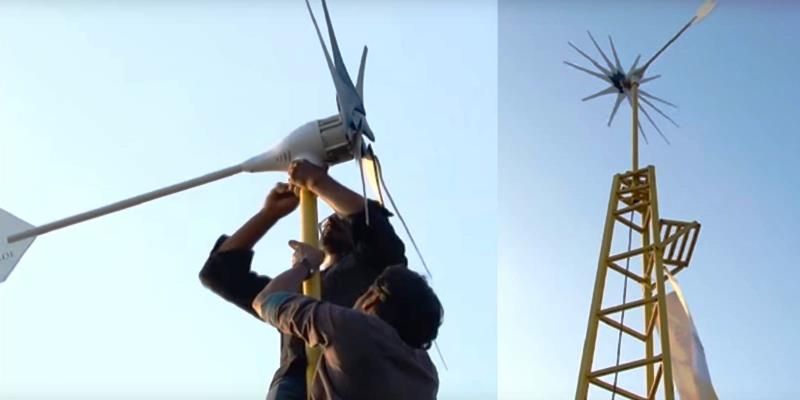
This is the cheapest option, costing you around $150 – $200 per windmill. įirstly, you have the cheapest option which is to put the windmill together yourself using new or second hand parts. Most people don’t realise that there are 3 distinct options when it comes to residential windmills for electricity. For battery storage systems, typical battery life is around 6-10 years, depending on the type - so batteries may have to be replaced at some point in the system's life.Wind generators for home use are becoming more popular in everyday American homes because they are becoming more and more affordable. Turbines can have a life of up to 20 years, but require service checks every few years to ensure they work efficiently. However, it's important to remember that costs always vary depending on location and the size and type of system. These costs are inclusive of the turbine, mast, inverters, battery storage (if required) and installation. Systems up to 1kW will cost around £3,000, whereas larger systems in the region of 1.5kW to 6kW would cost between £4,000 - £18,000. How much does a domstic wind turbine cost? Any unused or excess electricity can be exported to the grid and sold to the local electricity supply company. A special inverter and controller converts DC electricity to AC at a quality and standard acceptable to the grid.

Wind systems can also be installed where there is a grid connection.
Affordable home wind turbines generator#
It allows the generator to be used at optimum load for short periods of time to charge batteries when there is little wind, rather than by constant use at varying loads. A combined wind and diesel system gives greater efficiency and flexibility than a diesel only system. It's common to combine this system with a diesel generator for use during periods of low wind speeds. space and/or water heaters) when the battery is fully charged. You will also need a controller to divert power to another useful source (e.g. Off-grid systems require battery storage and an inverter to convert DC electricity to AC (alternating current - mains electricity). Most small wind turbines generate direct current (DC) electricity. Small-scale wind power is particularly suitable for remote off-grid locations where conventional methods of supply are expensive or impractical. Do you need a standalone or grid-connected system? System installation normally requires permission from the local authority. Issues such as visual impact, noise and conservation issues also have to be considered. You should also satisfy yourself as to the structural suitability of any proposed installation, and ensure that all appropriate planning, electrical and other legal requirements have been complied with. The amount of energy and carbon that micro wind turbines save depends a lot on a several factors, including size, location, wind speed, placement of nearby buildings, and the local landscape.Īnyone considering installing a micro wind turbine should recognise that the savings achievable can only be determined with any certainty by doing a detailed, site-specific assessment. An ideal way of doing this is with an anemometer, which you can buy for around £120. You can also collect primary information by setting up your own monitoring mast to record wind speed. For domestic installations, a good source of information on local wind speeds is the NOABL database, which can be accessed from the British Wind Energy Association. Knowledge of the local wind is critical to designing a wind energy system and predicting output.

on boats or in homes), to turbines grouped on wind farms supplying electricity to the grid. Uses range from very small turbines supplying energy for battery charging systems (e.g. Individual turbines vary in size and power output, from a few hundred watts to two or three megawatts (as a guide, a typical domestic system would be 2.5 - 6 kilowatts, depending on the location and size of the home). Wind power is proportional to the wind's speed, so even relatively minor increases in speed result in large changes in potential output.

However, this is still largely untapped and only 0.5% of our electricity requirements are currently generated by wind power. In the UK, we have 40% of Europe's total wind energy.


 0 kommentar(er)
0 kommentar(er)
